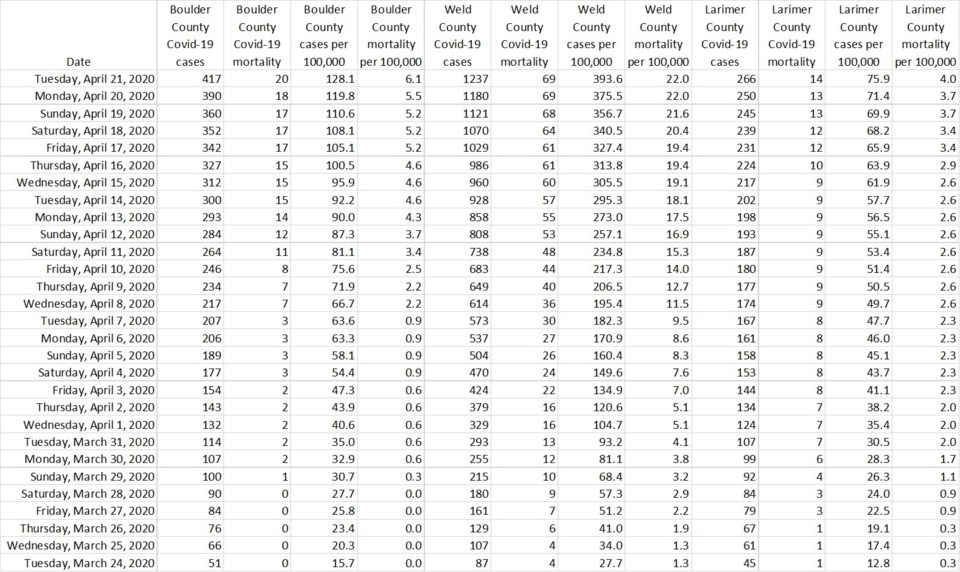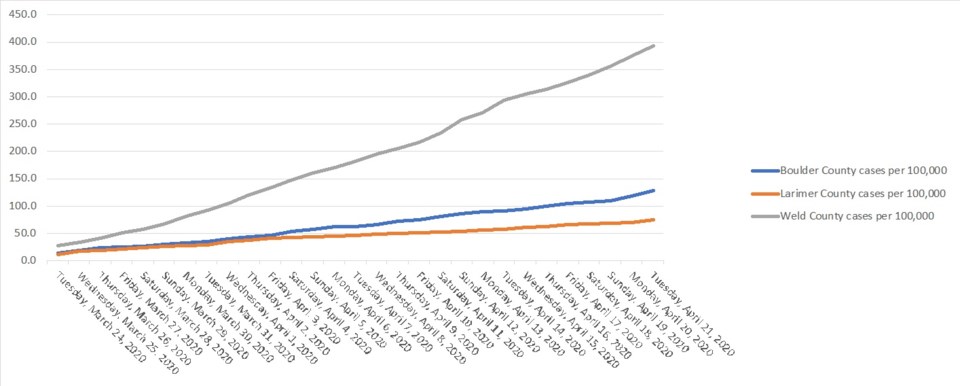This content was originally published by the Longmont Observer and is licensed under a Creative Commons license.
The statistics below were published by the Colorado Department of Public Health and Environment (CDPHE) on April 22nd for April 21st and before for Boulder, Weld, and Larimer Counties.


Cases in the table and graph above include people who have had a test that indicated they were positive for COVID-19 and epidemiologically-linked cases - that is, cases where public health epidemiologists have determined that a COVID-19 infection is highly likely because a person exhibited symptoms and had close contact with someone who tested positive. The number of epidemiologically-linked cases represents a very small portion of the reported cases.
The CDPHE publishes statistics daily by about 4:00 PM. Each daily update includes cases reported through the previous day. Infection and mortality reports may take a day or two to reach the CDPHE and then be verified and published.
County rates per 100,000 are calculated using 2018 population estimates from the Demography Section, Colorado Division of Local Government.
Boulder County Public Health publishes statistics which include the number of people hospitalized and the number who have recovered in Boulder County.
Regarding future changes to the Stay-at-Home order, while the Governor has announced the next phase of the response to COVID-19, the key message from him, as well as Boulder County Public Health, continues to be to stay at home to the greatest extent possible, even after the Stay-at-Home order is eased. The current Stay-at-Home order remains in effect through April 26. Boulder County Public Health is partnering with the state to ensure that there are clear guidelines on changes to the order and what they mean for Boulder County and neighboring communities. Additional specific guidance will be shared as soon as it becomes available.

.jpg;w=120;h=80;mode=crop)
